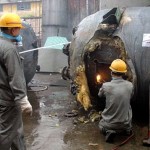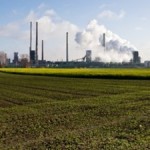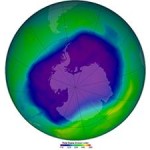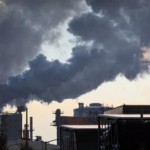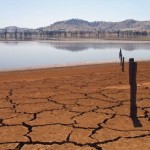The climate benefits of the Montreal Protocol could be significantly offset by projected emissions of HFCs (hydrofluorocarbons) used to replace ozone depleting substances.
- The Montreal Protocol has made large contributions toward reducing global greenhouse gas emissions. In 1987, ozone depleting substances contributed about 10 gigatonnes CO2-equivalent emissions per year. The Montreal Protocol has now reduced these emissions by more than 90 per cent. This decrease is about five times larger than the annual emissions reduction target for the first commitment period (2008-2012) of the Kyoto Protocol on climate change.
- Hydrofluorocarbons (HFCs) do not harm the ozone layer but many of them are potent greenhouse gases. They currently contribute about 0.5 gigatonnes of CO2-equivalent emissions per year. These emissions are growing at a rate of about 7 per cent per year. Left unabated, they can be expected to contribute very significantly to climate change in the next decades.
- Replacements of the current mix of high GWP (global warming potential) HFCs with alternative compounds with low GWPs or not-in-kind technologies would limit this potential problem.
The annual Antarctic ozone hole has caused significant changes in Southern Hemisphere surface climate in the summer.
- Ozone depletion has contributed to cooling of the lower stratosphere and this is very likely the dominant cause of observed changes in Southern Hemisphere summertime circulation over recent decades, with associated impacts on surface temperature, precipitation, and the oceans.
- In the Northern Hemisphere, where the ozone depletion is smaller, there is no strong link between stratospheric ozone depletion and tropospheric climate.
CO2, Nitrous Oxide and Methane will have an increasing influence on the ozone layer
- What happens to the ozone layer in the second half of the 21st century will largely depend on concentrations of CO2, methane and nitrous oxide – the three main long-lived greenhouse gases in the atmosphere. Overall, CO2 and methane tend to increase global ozone levels. By contrast, nitrous oxide, a by-product of food production, is both a powerful greenhouse gas and an ozone depleting gas, and is likely to become more important in future ozone depletion.
The Scientific Assessment Panel is expected to present the key findings of the new report at the annual Meeting of the Parties to the Montreal Protocol, to be held in Paris in November 2014. The full body of the report will be issued in early 2015.
Click here to read/download the pre-print version of the report.
Source: UNEP / WMO.
Notes:
The Scientific Assessment of Ozone Depletion 2014 was prepared and reviewed by 282 scientists from 36 countries (Argentina, Australia, Austria, Belgium, Botswana, Brazil, Canada, People’s Republic of China, Comoros, Costa Rica, Cuba, Czech Republic, Denmark, Finland, France, Germany, Greece, India, Israel, Italy, Japan, Korea, Malaysia, New Zealand, Norway, Poland, Russia, South Africa, Spain, Sweden, Switzerland, The Netherlands, Togo, United Kingdom, United States of America, Zimbabwe.)
Co-Chairs of the ozone assessment are: Prof. Ayité Lô Nohende Ajavon, Université de Lomé, Togo; Prof. John Pyle, University of Cambridge and National Centre for Atmospheric Science, UK; Dr. Paul Newman, NASA / Goddard Space Flight Center, USA; Prof. A.R. (Ravi) Ravishankara, Colorado State University, USA.

